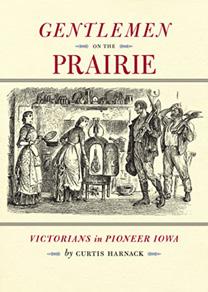
2 minute read
Craig Farmers Coop
Craig Coop Delivery Team has 85 Years of Combined Experience.
Diversifi ed Feed Services 120 Combined Years of Feed Experience
Advertisement
Quality Grain Storage Quality Feed Products
26336 C-12, LeMars, IA 51031 712-562-6544 | www.craigcoop.com
A BRITISH COLONY IN PLYMOUTH COUNTY
Every American child learns the story of the 13 British colonies, the Boston Tea Party, Paul Revere’s ride, the Continental Congress and the Declaration of Independence. However, the rest of the story … is that the British invaded Plymouth County, Iowa, a century after the American Revolution.
Englishman William Close, and his brothers Frederick and James, bought land in northwest Iowa and sold it the sons of upper class English families. The experiment created a colony for people “of the better class” who were not in line to inherit land but whose fathers could set them up in farming. Close conceived the idea after meeting a land speculator from Illinois named Daniel Paullin. In 1878, The Close Brothers Group bought 14,475 acres of land. They marketed the land to young men attending English universities, giving them the opportunity to become farmers in Iowa and even learn relevant farming methods from a college to be established in the area.
The Close Colony was founded near Le Mars and its heyday was from 1879 to 1885. In addition to Le Mars, the British “colonists” lived near the towns of Orange City, Seney, Hawarden, Ireton, Correctionville and Sioux City. The Close brothers purchased Kingsley, Iowa, then known as Quorn, in 1880, along with parts of six Iowa counties: Plymouth, Lyon, Sioux, Woodbury, Cherokee and Osceola. They also had land in Minnesota, Texas and Kansas. At one time, they owned about 40,000 acres of the best land in the U.S. Another report said they owned 300,000 acres. The Englishmen and Scotsmen raised Shorthorn and Hereford cattle, plus hogs and many sheep. The colony dissolved around 1890 after Frederick Close died as the result of injuries from an accident playing polo in Sioux City. However, William Close continued his speculative ways, becoming involved in a railroad venture in the Yukon.
The story of The Close Colony was researched and told in detail by the late author Curtis Harnack in the book

Author Curtis Harnack was born on a farm near Remsen and graduated from Le Mars High School. Gentlemen of the Prairie. Harnack grew The first page of a pamphlet produced by William Close promotes his “colony” in northwest Iowa.








